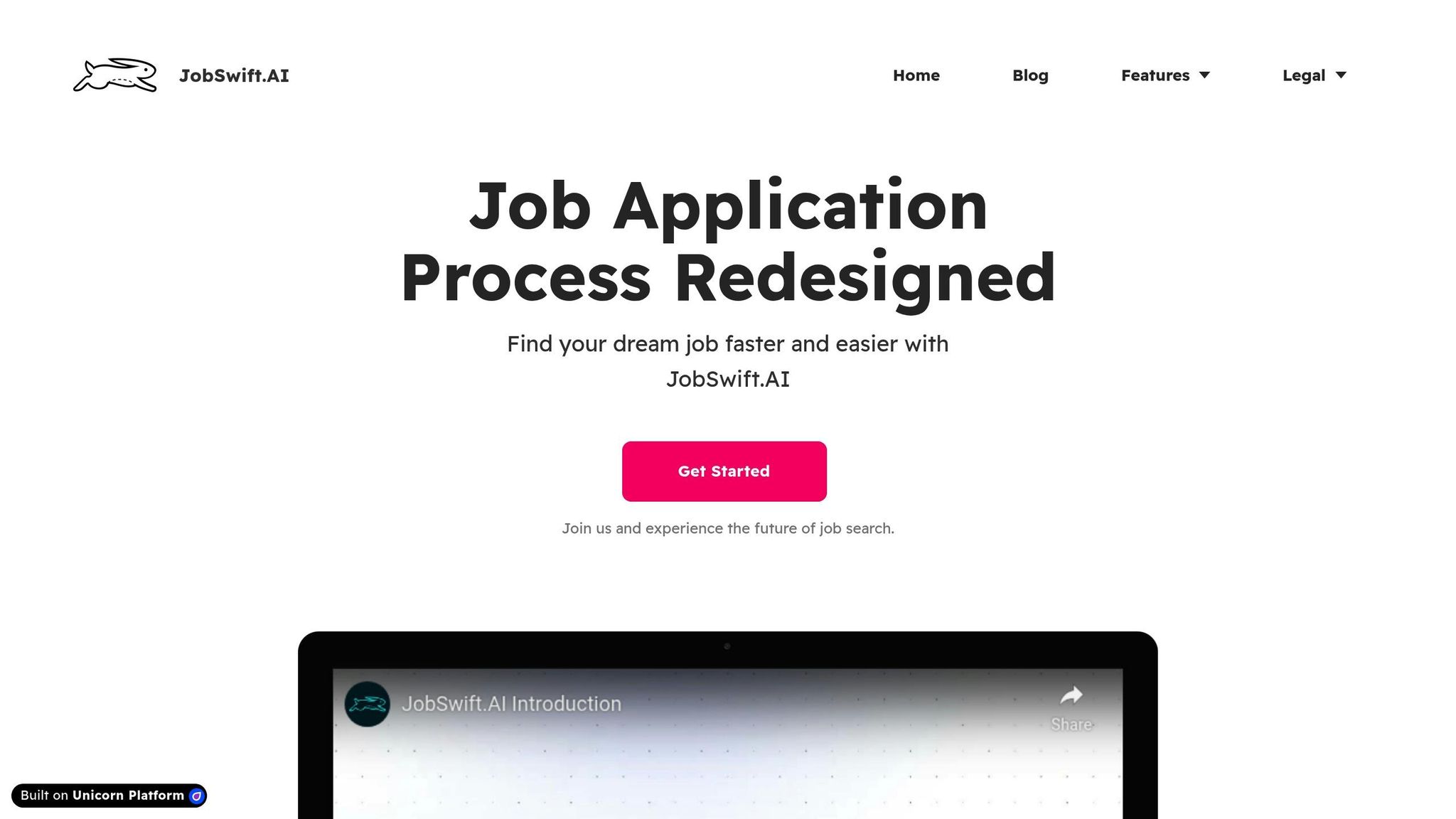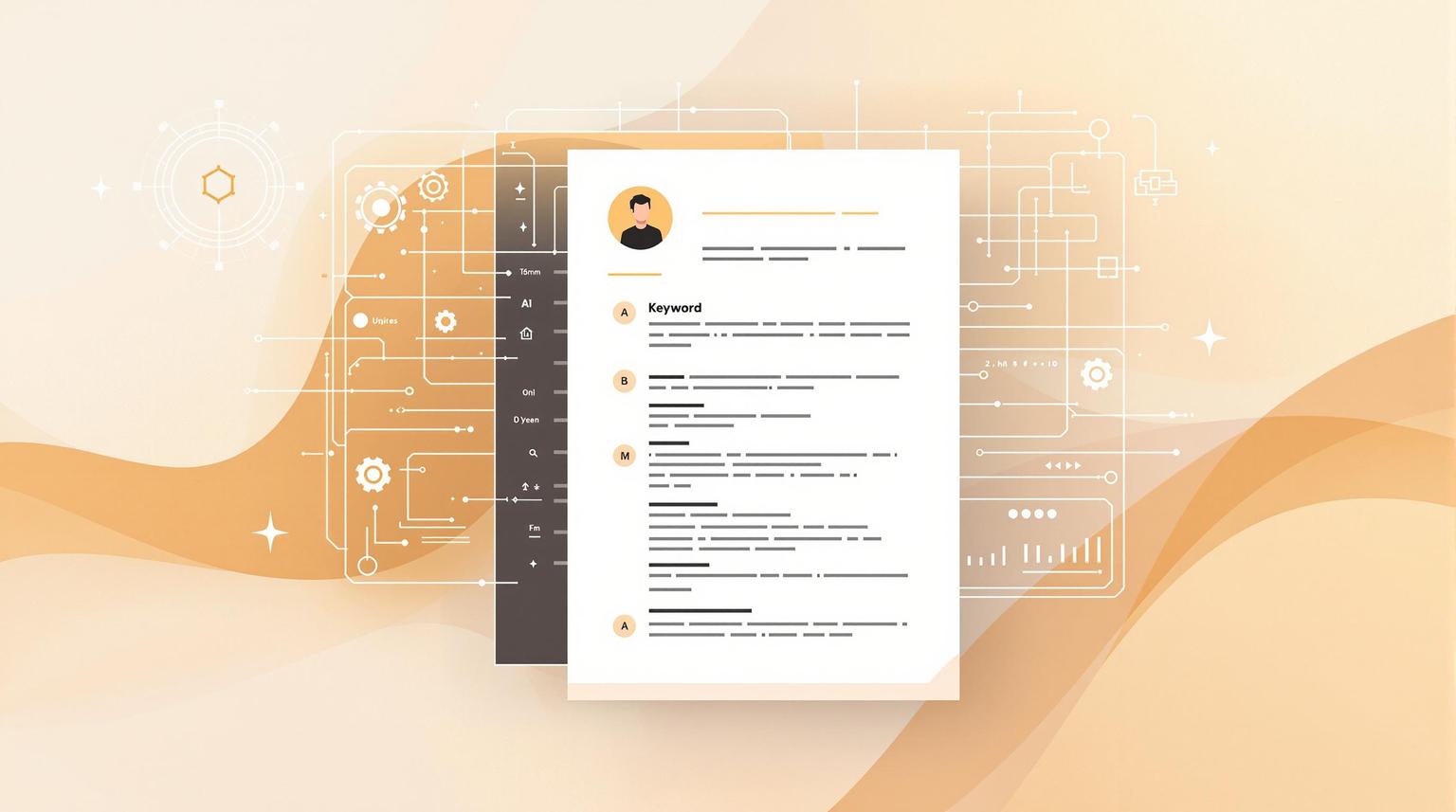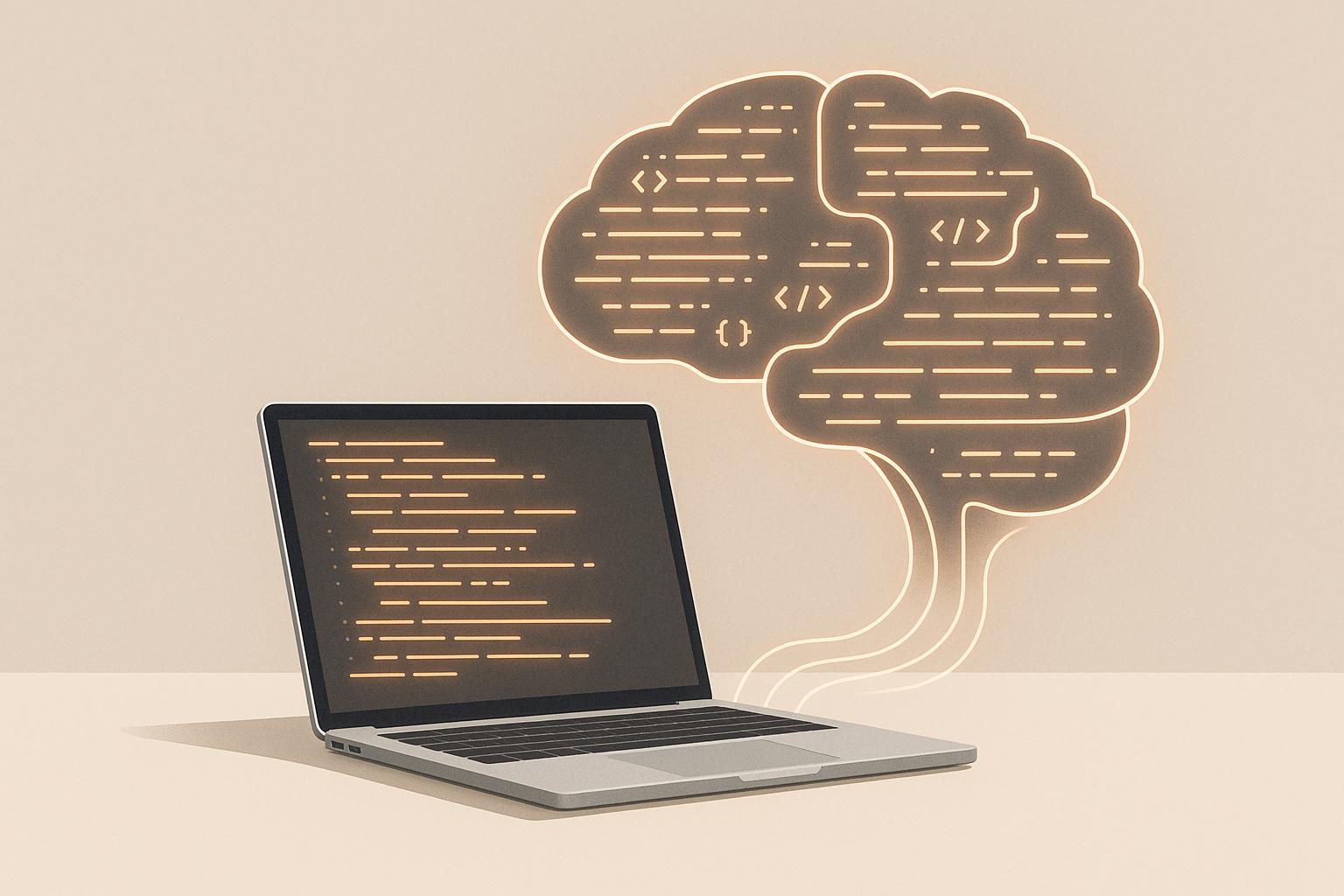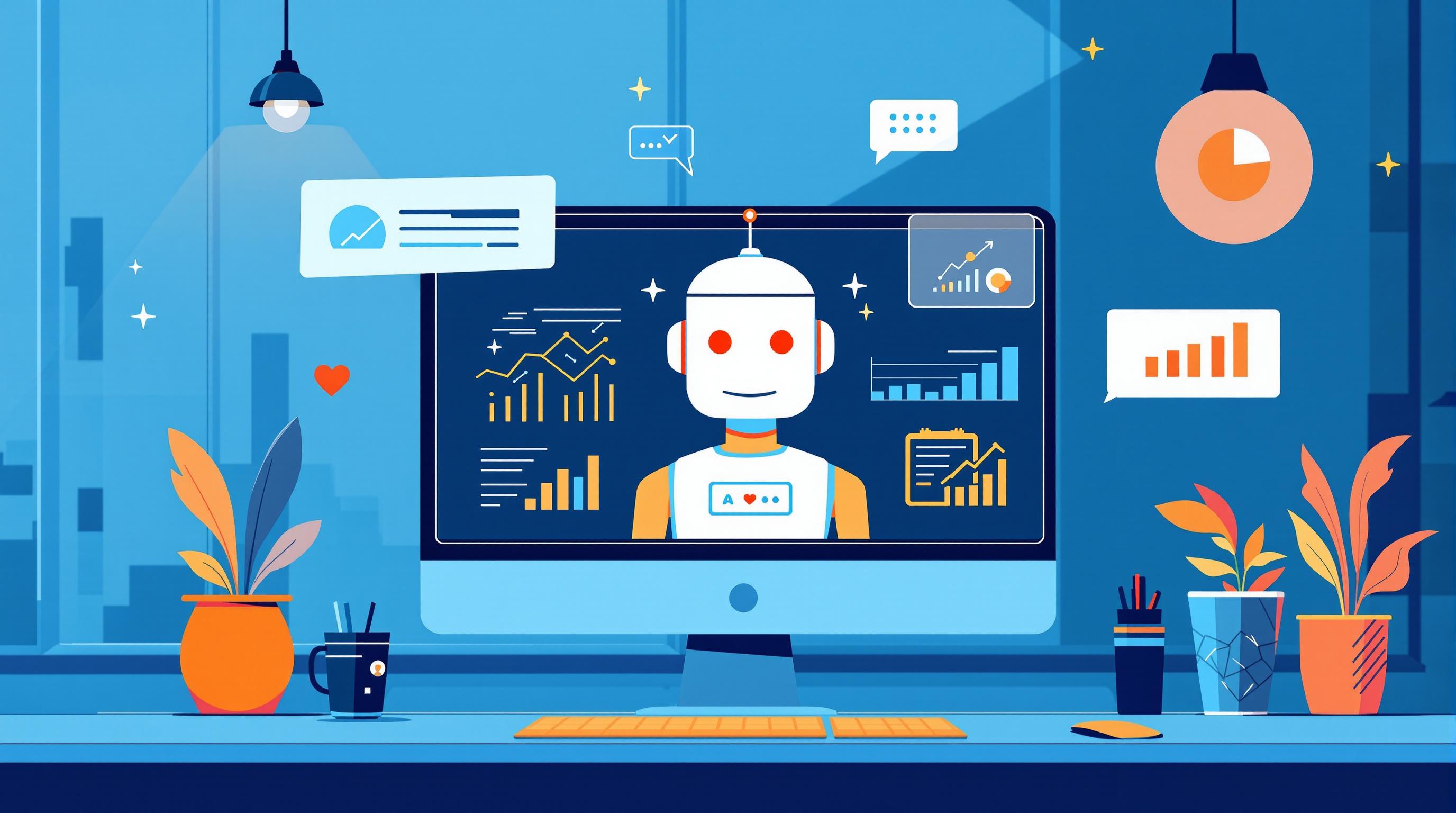AI screening tools and ATS (Applicant Tracking Systems) are reshaping recruitment by making hiring faster, more accurate, and less biased. Here's how they work together:
- AI Screening Tools: Use machine learning to analyze resumes, rank candidates, and assess skills. These tools are ideal for high-volume hiring, saving time and improving candidate matching.
- ATS Systems: Manage the entire hiring process, from job postings to candidate tracking. They organize applications, filter resumes, and streamline team collaboration.
- Integration Benefits:
- Cuts resume screening time by up to 75%.
- Reduces hiring bias by up to 40%.
- Improves hiring accuracy and provides data insights for better decision-making.
Despite the advantages, integration requires careful planning to address challenges like data compatibility, privacy concerns, and the need for team training. With proper implementation, combining AI and ATS can transform recruitment efficiency and results.
How to Automate Recruiting with AI Agents
Steps to Connect AI Screening Tools with ATS Systems
Integrating AI screening tools with your ATS can significantly improve your recruitment process, but it requires a well-planned approach. By breaking the process into three phases, you can ensure a seamless connection that enhances efficiency and performance. Start by evaluating your current ATS to identify areas where AI can make the most impact.
Review Current ATS Features
Before diving into AI integration, take a close look at your ATS's current capabilities to identify gaps and opportunities. For instance, 79% of organizations have already incorporated AI into their ATS, showcasing its growing importance.
- Automated Resume Parsing: Many ATS systems rely on basic keyword matching, which can overlook qualified candidates. Check if your system can handle complex resume formats, extract relevant skills accurately, and maintain consistency across different document types.
- Candidate Matching and Ranking: Evaluate the system's ability to score and rank applicants, especially during high-volume hiring. Identify any limitations that AI tools could address.
- Data Security and Compliance: Ensure your ATS meets privacy regulations and can handle the additional data processing demands of AI tools. This step is crucial to avoid compliance issues that could lead to costly penalties.
- Integration Capabilities: Look for ATS solutions with open APIs or pre-built connectors, as these simplify the integration process. Early adopters of AI sourcing tools have seen up to a 75% reduction in cost per screen when integration is done right.
Set Clear Connection Goals
Use your ATS evaluation to define specific, measurable integration goals. Clear objectives help avoid unnecessary complications and ensure the project delivers tangible improvements.
- Time Efficiency: One common goal is to streamline resume screening and reduce time-to-hire. Set measurable targets to track these improvements.
- Candidate Quality: Define what "quality" means for your organization, whether it's better skill matching, higher retention rates, or improved alignment with company values. AI tools can uncover candidates often missed by traditional keyword searches, but success depends on having clear evaluation criteria.
- Bias Reduction and Compliance: AI has the potential to reduce human bias by up to 40%, but it requires ongoing oversight to prevent algorithmic bias. Plan for regular audits and establish fairness metrics to monitor performance.
- Data-Driven Insights: AI integration can provide valuable analytics on hiring patterns, candidate sources, and process inefficiencies. Decide which data insights are most important and ensure your integration captures them effectively.
Align these goals with the gaps you identified in your ATS to maximize the impact of the integration.
Install and Test the Connection
The technical implementation phase is where everything comes together. Collaboration between your IT team, HR department, and vendor support is critical to ensure the integration runs smoothly.
- Establish Secure Data Connections: Work with your ATS provider and the AI tool's team to configure secure authentication, schedule data transfers, and set up error-handling protocols.
- Data Mapping: Align data fields in your ATS with the AI tool's requirements. Pay attention to details like candidate profiles, job descriptions, and scoring criteria to avoid parsing errors or inaccuracies.
- Pilot Testing: Conduct small-scale tests with a limited number of candidates and job openings. Focus on resume parsing accuracy, data integrity, and processing speed. Test various resume formats - PDFs, Word documents, and online submissions - to ensure consistent results.
- Training for HR and Recruiters: During the pilot phase, train your team on how to interpret AI-generated candidate scores. This preparation will ease the transition when the system is fully implemented.
Once the system is live, set up continuous monitoring. Track performance metrics, log errors, and collect user feedback to fine-tune the integration over time. This proactive approach ensures your AI-ATS connection remains efficient and effective in the long run.
Key AI Screening Features Improved by ATS Connection
When AI screening tools link up with ATS (Applicant Tracking System) platforms, they unlock capabilities that reshape how recruiters assess candidates. These connections enhance efficiency, precision, and fairness in hiring, allowing recruiters to make faster and better-informed decisions.
Automatic Resume Reading and Candidate Matching
By integrating with ATS platforms, AI screening tools significantly improve how resumes are read and matched to job requirements. For instance, one advanced system boasts an impressive 95% accuracy in extracting and analyzing resume details. These tools then score candidates based on how well their qualifications align with the job description, helping recruiters quickly identify top prospects.
AI also recognizes synonyms and related terms, ensuring candidates with equivalent experience aren’t overlooked. Even transferable skills are flagged, allowing candidates with relevant but non-obvious qualifications to stand out. The efficiency gains are remarkable: one tool reduces screening time by 80% while uncovering 20% more qualified candidates. Another system cuts screening time by 90% and improves hiring accuracy by 40%.
AI-Powered Candidate Data
ATS integration also supercharges data management, offering tools that enhance analytics and communication. AI-enabled systems provide features like candidate ranking and predictive analytics, helping recruiters identify patterns from past hiring successes to refine job descriptions and searches.
Additionally, AI-powered chatbots keep candidates in the loop with timely updates and personalized recommendations. This level of engagement not only improves the candidate experience but also helps recruiters make data-driven decisions by tracking hiring trends, predicting success rates, and fine-tuning recruitment strategies.
Bias Reduction and Rule Compliance
One of the standout advantages of combining AI with ATS platforms is the ability to create fairer and more compliant hiring processes. AI helps minimize bias by focusing on objective qualifications and automating parts of the evaluation process. For example, standardized AI evaluations reduce the influence of subjective judgment.
Some systems even anonymize candidate profiles by removing identifiable information, such as names or photos, that could lead to unconscious bias. The results are promising: companies using AI-driven recruitment tools have reported a 20% increase in hiring underrepresented candidates. Moreover, organizations that pair AI with human oversight have seen a 45% drop in biased decisions compared to those relying solely on human judgment.
For instance, a global retailer adopting blind hiring practices saw a 35% rise in women hires. ATS tools also enforce consistent hiring practices by standardizing evaluation criteria and interview questions. Advanced systems can even flag biased language in job descriptions or patterns in candidate scoring and feedback. Regular audits and monitoring are crucial to ensure these tools continue to support equitable hiring outcomes.
Benefits and Challenges of AI-ATS Connection
Linking AI-driven screening tools with ATS systems has the potential to revolutionize recruitment processes, but it’s not without its hurdles. Below, we’ll break down the key advantages and challenges of this integration.
AI-powered ATS solutions can cut the time-to-hire by half and improve the quality of hires by 20%. By automating repetitive tasks, recruiting teams save an average of 14 hours weekly, while companies that leverage AI in hiring are 46% more likely to make successful hires. These systems also boast impressive performance metrics, such as 95% parsing accuracy and resume screening speeds that are 80% faster than traditional methods.
On the flip side, implementing these tools isn’t always smooth. Compatibility issues often arise due to different data formats and APIs, and data migration can lead to inaccuracies. Training teams to use these systems effectively can be time-consuming, and glitches or poorly designed user interfaces may further complicate adoption. Concerns around data privacy and security are significant, especially when AI tools handle sensitive candidate information. Additionally, if not carefully monitored and validated, AI algorithms can perpetuate biases - an issue highlighted by a study showing that 40% of AI systems used in hiring exhibit implicit bias. These challenges underscore the importance of ongoing oversight and thoughtful integration.
Cost is another critical factor. Organizations must weigh the initial investment against the potential long-term efficiency gains. Poor integration with existing recruitment tools can disrupt the entire hiring process, making it essential to thoroughly research vendors and solutions.
Benefits vs. Challenges Comparison Table
| Benefits | Specific Impact | Challenges | Risk Level |
|---|---|---|---|
| Time Efficiency | 50% reduction in time-to-hire, 14 hours saved weekly | System Integration | High – compatibility issues |
| Quality Improvement | 20% better hire quality, 46% higher success rate | Data Privacy | High – risk to sensitive data |
| Accuracy Enhancement | 95% parsing accuracy, 80% faster screening | Bias Perpetuation | Medium – 40% of systems show bias |
| Diversity Gains | 16% increase in hiring diversity (Unilever) | Setup Complexity | Medium – requires training |
| Bias Reduction | 30% fewer bias-related hiring errors | Cost Investment | Medium – upfront and ongoing costs |
| Retention Improvement | 35% higher employee retention rates | User Experience | Low – potential inefficiencies |
A balanced approach that combines AI tools with human oversight can reduce biased decisions by 45% compared to relying solely on automation. This hybrid model helps organizations harness AI’s efficiency while minimizing risks.
The financial stakes are high, as illustrated by iTutorGroup’s $365,000 settlement in September 2023 for an EEOC lawsuit related to discriminatory hiring practices driven by AI. However, success stories show what’s possible with careful implementation. Hilton, for instance, saw a 75% boost in its application-to-interview ratio thanks to automated screening tools, while Unilever reported a 16% increase in hiring diversity.
The real question for organizations isn’t whether to integrate AI with ATS systems, but how to do it responsibly. With 67% of talent acquisition professionals agreeing that advanced technology like AI is crucial for staying competitive, the focus must shift to crafting thoughtful strategies for implementation. These insights provide a foundation for exploring practical use cases and best practices in AI-ATS integration.
sbb-itb-96bfd48
Practical Uses and Best Practices
AI-ATS integrations are reshaping recruitment processes across industries and business sizes. Let’s dive into some practical applications and strategies for successful implementation.
Common Use Cases
One of the standout applications is bulk resume screening and candidate matching. Imagine a recruitment agency tasked with filling a Senior Software Engineer position. An AI-powered system can analyze the job description, comb through a database of candidates, and rank them based on relevance. Recruiters can then apply filters like location or employment status to refine the list further. This not only saves time but also ensures no qualified candidates are overlooked.
For large companies receiving thousands of applications per role, automated screening workflows are a game-changer. These systems parse resumes, extract crucial details, and match qualifications to job requirements. Candidates who meet or exceed the criteria are flagged for human review. With HR teams now using an average of 21 software tools - double the number from 2019 - these automated processes have become essential.
AI-powered video interview assessments are gaining traction, especially in hiring for customer service roles. These platforms evaluate candidates on communication, problem-solving, and empathy, while also providing instant feedback. The result? A shortlist of applicants who align closely with the role’s requirements.
Another big time-saver is interview preparation and summary generation. AI tools can create tailored candidate summaries and generate job-specific interview questions, significantly cutting down preparation time for recruiters. One founder noted how this approach streamlined their hiring process.
These examples highlight how AI-ATS integrations can make recruitment more efficient and effective, laying the groundwork for best practices to sustain these benefits.
Best Practices for Long-Term Success
To ensure AI-ATS integrations deliver consistent results, organizations should focus on a few key strategies.
Performance monitoring and optimization is critical. Set clear Key Performance Indicators (KPIs) and use automated alerts to flag issues when metrics fall outside acceptable ranges. Companies that align AI tools with specific objectives have reported up to a 48% boost in diversity hiring and a 30–40% reduction in cost-per-hire.
Regular system audits and updates are equally important. Review AI decision-making processes, refresh training data to reflect market trends, and tweak algorithms based on performance outcomes. Well-maintained systems have been shown to enhance team productivity by as much as 70%.
Data synchronization and integrity should never be overlooked. Mapping fields between ATS and AI tools, setting up real-time updates via webhook/API triggers, and implementing robust error-handling rules are all essential. Since many ATS platforms use proprietary data formats, technical alignment is key to seamless operation.
Staff training and change management play a pivotal role in successful adoption. Teams need to be trained to interpret AI-generated insights effectively, striking a balance between automation and human judgment. Promoting a culture where AI is seen as an assistant rather than a replacement can encourage wider acceptance.
Finally, compliance and transparency are non-negotiable. Adhere to data security regulations like CCPA and GDPR, train staff on secure data handling, and be upfront with candidates about how their information is used. Clear reporting protocols for security issues are also essential.
How JobSwift.AI Supports Job Seekers

While organizations refine their hiring processes with AI-ATS tools, job seekers can also benefit from platforms like JobSwift.AI, which simplifies application tracking and enhances the job search experience.
The platform’s automatic job application tracking feature allows candidates to monitor their applications across multiple opportunities, ensuring no prospects slip through the cracks - even during high-volume hiring periods.
With AI employer insights, job seekers gain valuable information about potential employers, helping them tailor applications and prepare for interviews. This is particularly useful when applying to roles where AI-powered systems prioritize specific keywords and qualifications.
To combat the growing issue of fraudulent job postings, JobSwift.AI offers job scam protection, helping users identify legitimate opportunities and avoid scams.
JobSwift.AI is available in two tiers: a Free plan (one application per day) and a Pro plan ($249.99/year or $39.99/month for up to 300 applications each month).
An upcoming feature, AI CV optimization, will assist candidates in aligning their resumes with the requirements of AI-driven screening systems. This feature is especially timely, as 43% of recruiters now use AI tools primarily to save time.
Conclusion
Integrating AI with ATS systems has transformed recruitment by cutting time-to-hire by 50%, improving the quality of hires by 20%, and automating tasks that once required manual effort. This partnership also reduces unconscious bias by focusing solely on predefined criteria when evaluating candidates. With natural language processing analyzing resumes and cover letters, organizations can achieve more accurate candidate matches while gaining valuable insights into recruitment trends and performance metrics.
This shift doesn't just benefit employers - it also empowers job seekers to navigate today’s competitive hiring landscape. With 87% of companies leveraging AI-driven tools in their recruitment processes, candidates need resources to stay ahead. Platforms like JobSwift.AI provide job seekers with tools like automatic application tracking, AI-driven employer insights, and job scam protection, helping them adapt to modern hiring practices.
The future of recruitment lies in this synergy between AI-powered screening tools and ATS systems. By embracing these solutions, companies can attract top talent while ensuring a seamless and secure experience for candidates.
FAQs
How can companies protect data privacy and stay compliant when using AI with ATS systems?
Safeguarding Data Privacy in AI-Integrated ATS Systems
When combining AI with applicant tracking systems (ATS), protecting data privacy and staying compliant with regulations should be a top priority. Start by implementing clear, transparent privacy policies and always secure explicit user consent before processing any data. Depending on where the data is stored or processed, adhering to legal frameworks like the GDPR (General Data Protection Regulation) in Europe or the CCPA (California Consumer Privacy Act) in the U.S. is crucial.
To make compliance more manageable, consider AI tools that come equipped with built-in features for privacy checks. These tools can automate many aspects of compliance and even provide real-time updates to keep up with changing regulations. Beyond technology, regular audits and thorough employee training on best practices for handling data are key steps to build trust and ensure security.
What are the risks of bias in AI recruitment tools, and how can they be avoided?
AI recruitment tools, while powerful, can sometimes unintentionally introduce bias. This happens when the algorithms are built using incomplete or skewed training data, which might end up favoring certain groups or characteristics. The result? Hiring practices that aren’t as fair as they should be and a workplace that misses out on true diversity.
To address this, it’s crucial to rely on diverse and balanced training data. Regular bias audits are essential to catch and fix potential issues early. Additionally, designing algorithms with fairness and transparency at their core can make a big difference. Another effective approach is implementing blind hiring - removing details like names or photos during the initial screening phase - to ensure candidates are evaluated more equitably.
How can companies train their HR teams to effectively interpret AI-generated candidate scores?
To empower HR teams to effectively interpret AI-generated candidate scores, it's crucial for companies to offer specialized training on the mechanics of AI scoring and its role in recruitment. This means breaking down the core algorithms, teaching how to evaluate scores within the broader context of a candidate's profile, and tackling concerns around potential biases.
Hands-on workshops, in-depth case studies from real-world scenarios, and ongoing support can help HR teams build confidence in making informed, data-driven hiring decisions. Additionally, regular updates and refresher sessions on system changes will ensure HR professionals stay current and continue to perform their roles effectively.


